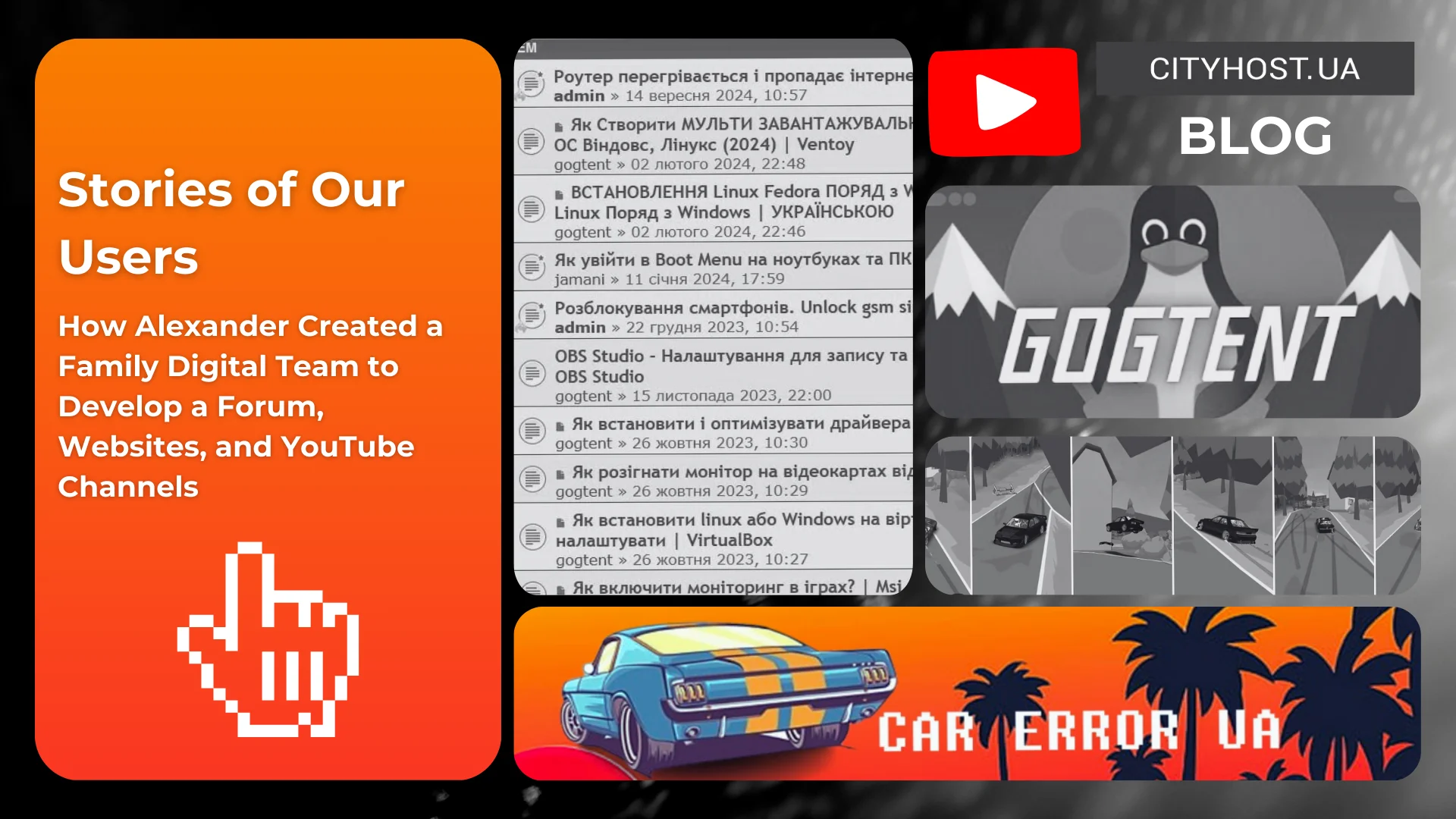
- What is UGC and How Does It Differ from Influencer Marketing
- Why You Should Use UGC
- Not All the Same: Who Should Use UGC
- Types of UGC and How to Use Them
Advertising banners on websites, sponsored posts on social media, and intrusive ads on YouTube are classic business promotion methods that most people ignore. Consumers choose products based on recommendations from ordinary users—by reading reviews, forum posts, or seeing brand mentions in social media videos. In other words, they prefer user-generated content. Knowing how to use UGC for business allows you to attract attention more effectively, increase audience loyalty, and improve external optimization while investing minimal resources.
What is UGC and How Does It Differ from Influencer Marketing
UGC (user-generated content) is any type of content (text, video, photos) that regular customers create voluntarily. For example, if you have been renting virtual hosting from Cityhost for a long time, appreciate its user-friendly interface, convenient CMS installer, and reliable security, you might decide to share your experience on your website, a forum, or social media. This review wouldn’t follow the rules of traditional advertising, with perfect images and templated text—you simply liked our services and wanted to help other users looking for a hosting provider.
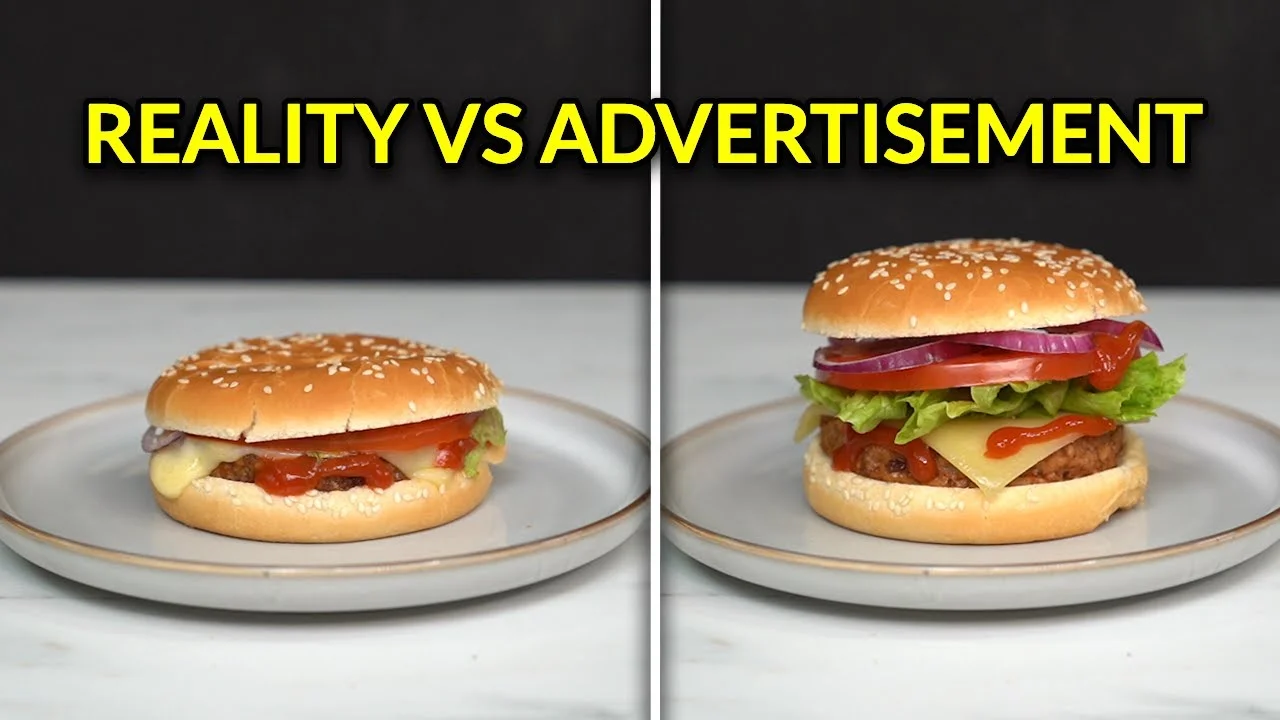
This highlights the main advantage of UGC—it is sincere, authentic, and natural content, a genuine recommendation rather than professional advertising, which often has little to do with reality. Moreover, people have become so accustomed to traditional advertising that they have developed "banner blindness"—the subconscious ignoring of ads.
So how does UGC differ from influencer marketing, considering that bloggers also share their experiences with products or services?
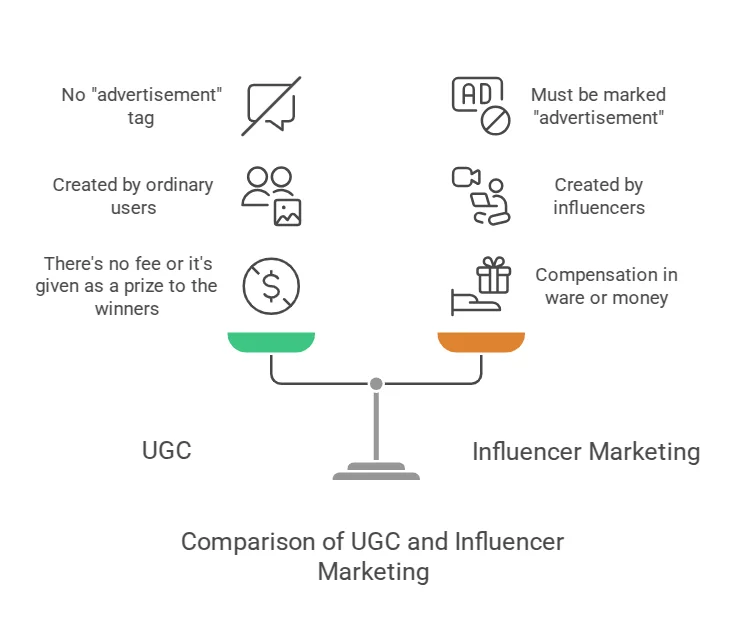
User-generated content is an honest opinion about a product or service from a user who has no vested interest in promoting the brand. A person uses a product and then shares their impressions online, just as they would in a conversation with friends. Other users trust UGC much more because they understand that the common "expectation vs reality" disappointment is unlikely to happen.
Influencer marketing, on the other hand, is professional advertising for a product or service by a blogger who receives compensation for their work (money, discounts, products, etc.). The collaboration follows a client-contractor model: the company provides a technical assignment with a list of requirements, the blogger completes the task, and the content is submitted for approval. If the influencer shares an honest opinion and mentions a few drawbacks, the client is unlikely to accept the work. As a result, consumers are often disappointed with the product because it turns out to be quite different from what their favorite influencer described.
Important! Confusion between user-generated content and influencer marketing is particularly common in the Ukrainian market. In the U.S., Canada, the U.K., and other countries, strict disclosure requirements for sponsored content exist, so influencers must label posts with #ads or #sponsored. In Ukraine, such regulations are not as stringent, and bloggers often disguise ads as personal recommendations. However, the situation has been improving in recent years, with more Ukrainian influencers openly acknowledging advertisements and sponsored integrations.
Read also: Extraordinary Ukrainian Businesses and Marketing Strategies That Truly Work
Why You Should Use UGC
The main goal is to increase trust in the brand, avoid "banner blindness," and minimize the risk of "expectation vs. reality" disappointment. And it works—here are some statistics from Billo for 2024:
- UGC influences the purchasing decisions of 70% of Generation Z and 78% of Millennials;
- Generation Y remembers user-generated content 35% better than traditional ads;
- 84% of consumers trust brands with user-generated content more;
- 75% of search results for major brands link to user-generated content.
Let’s take a closer look at the key advantages of user-generated content:
- A chance to stand out. People have learned to ignore traditional banners and advertising integrations. In contrast, user content looks like a breath of fresh air amid template-based ads, attracting potential customers.
- A positive impact on the brand. A well-timed and thoughtful response to user-generated content increases audience loyalty to the company.
- Versatile usage. UGC can be incorporated into official websites, social media, email campaigns, and contextual advertising.
- Additional content. Nowadays, creating a website is relatively easy—you just need to rent hosting, register a domain, install a CMS, and choose a template. However, filling it with content is much more challenging. The same goes for social media posts—writing scripts, acquiring props, and renting a studio all take time and money. This is where UGC helps: users write reviews on their own, essentially providing your online project with free content.
- Minimal investment. There’s no need to spend time creating user content or paying influencers for ads. You may need to run a contest, but that still costs significantly less than organizing a full-scale ad campaign with popular bloggers and celebrities.
The reason for UGC’s rapid rise in popularity is simple—people are tired of deception. There have been countless instances where a blogger claims to have used a product for years because it's "the best," only to feature similar products from different brands in every new video or post. This is why people no longer trust companies and instead seek out opinions from ordinary users who share their problems. User-generated content naturally resonates with audiences, helping them cut through polished corporate messaging and find a product that truly meets their expectations.
Read also: What is Clickbait and How to Combat It
Not All the Same: Who Should Use UGC
User-generated content is most commonly used by traditional businesses, such as cosmetic and perfume brands, online stores selling accessories, clothing, footwear, electronics, and gadgets, as well as gyms, restaurants, cafes, and travel agencies. For example, a person goes to the gym, takes photos there, and posts them online, prompting their followers to ask, "Which gym is this?". Or someone travels to Turkey and shares their experience on Instagram, mentioning the travel agency and/or hotel.
However, some industries don’t use user-generated content as frequently, but they should pay special attention to it:
- Hosting companies. The lower prevalence of UGC in this field is due to the specific nature of the services. Hosting, VPS/VDS, and dedicated servers are needed by fewer people compared to new clothing, gadgets, or food. However, they are still essential, so it’s important to encourage customers to share reviews, as well as their experiences with creating and managing web resources. For example, our clients regularly leave feedback both on our website and on Instagram or Telegram.

- Web agencies and developers. You can request reviews in text or video format and ask clients to share case studies.
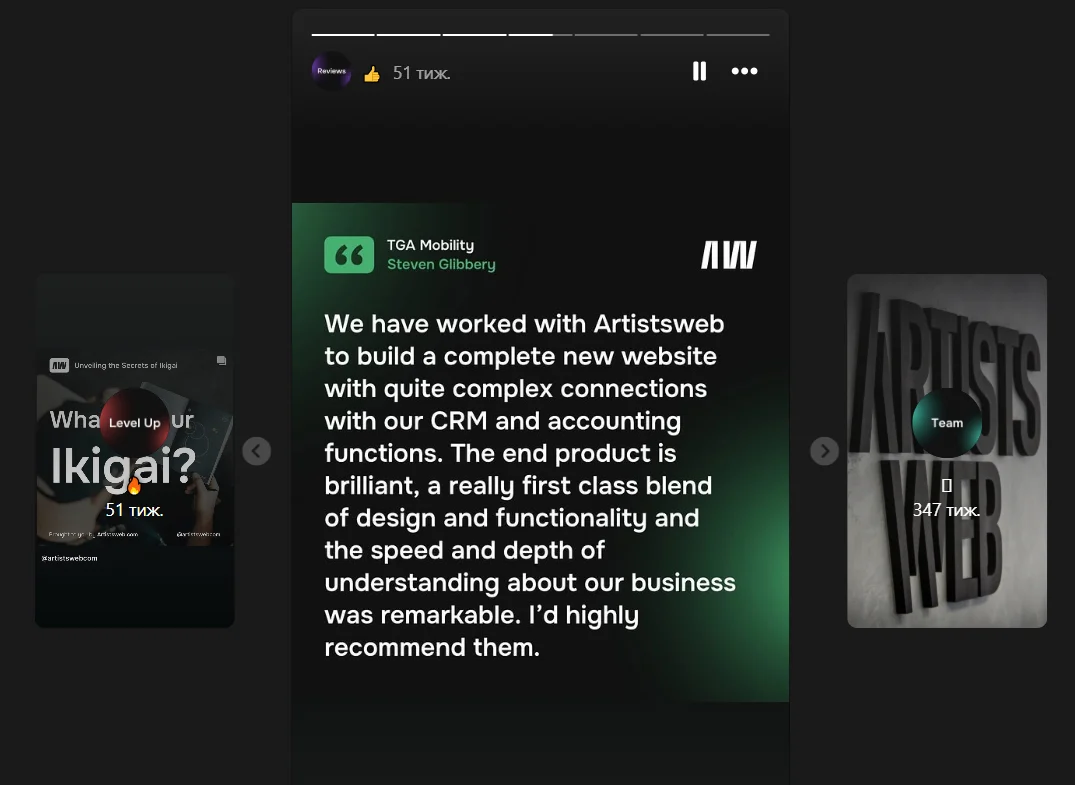
- Financial services. A great example of UGC is Monobank’s reward system, which users frequently share on social media, drawing attention to the bank. Another example is the bank’s custom card skins, which customers and other companies also regularly talk about.
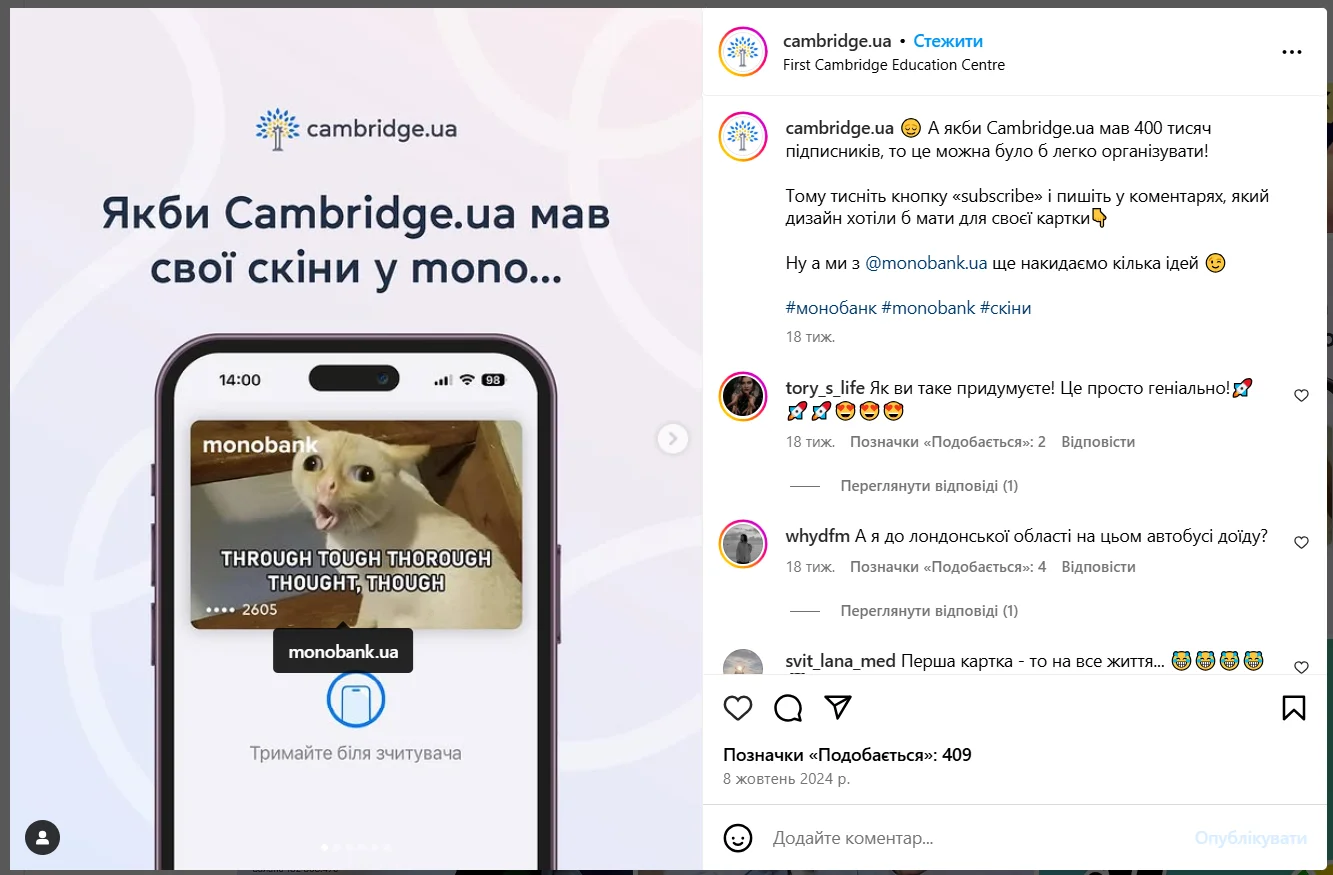
- Educational platforms. The most effective approach is to ask graduates to share their learning achievements and job search stories after completing their studies. Duolingo users, for instance, often post screenshots of their progress.
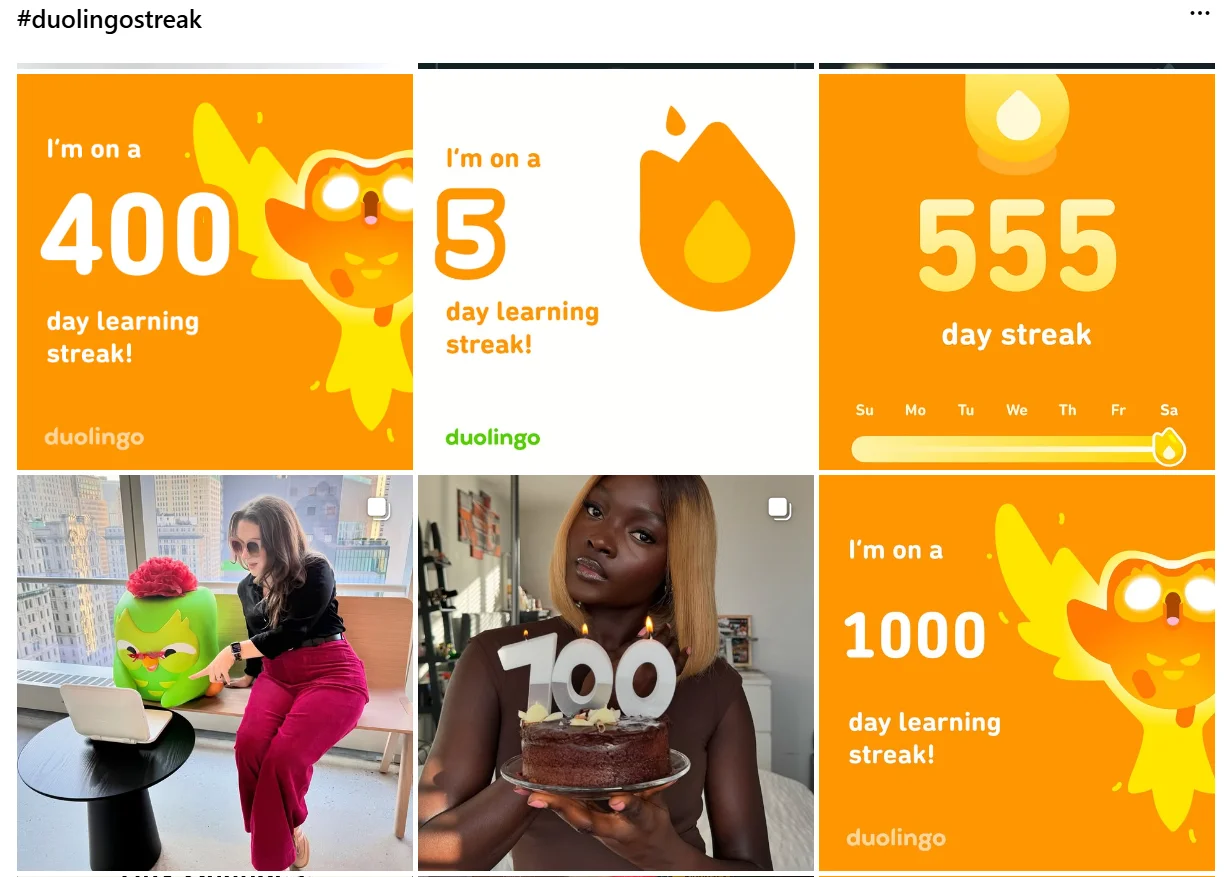
- Logistics companies. A clear leader in the Ukrainian market is Nova Poshta, which actively participates in various challenges, launches its own, shares customer feedback on social media, and even creates mini-games.

These examples show that even in less emotionally engaging industries, user-generated content can help build trust and attract new customers. While we’ve highlighted well-known companies, nothing stops small and medium-sized businesses from publishing customer reviews and launching their own UGC campaigns.
Read also: What is tone of voice - what brand tone to speak to your audience
Types of UGC and How to Use Them
User-generated content is any type of content created by ordinary users. They can write reviews in text or video format, share screenshots, create full-fledged reviews and comparisons. Your task is to create a comfortable environment for this (enable comments on your website, run contests, release stickers and merchandise like Starbucks), and continuously improve your products to avoid negative UGC.
Let’s take a closer look at the types of user-generated content and how to use them.
Comments and Reviews
Comments are perfect for companies that have their own website with a blog. Simply allow all visitors to leave comments and publish engaging, relevant content. While comments don’t directly affect a website’s ranking, they add valuable content that helps search engines index pages more effectively. Comments also increase the average time users spend on a page, which improves the chances of ranking higher in search results.
Reviews are one of the key types of UGC that help prevent the "expectation vs reality" problem. According to BrightLocal, 75% of consumers read reviews before purchasing a product or using a service, and 61% of consumers check 2-3 review sites before making a decision. We also allow users to leave reviews, giving them a platform to share their experience with Cityhost’s services and help others find a reliable hosting provider.
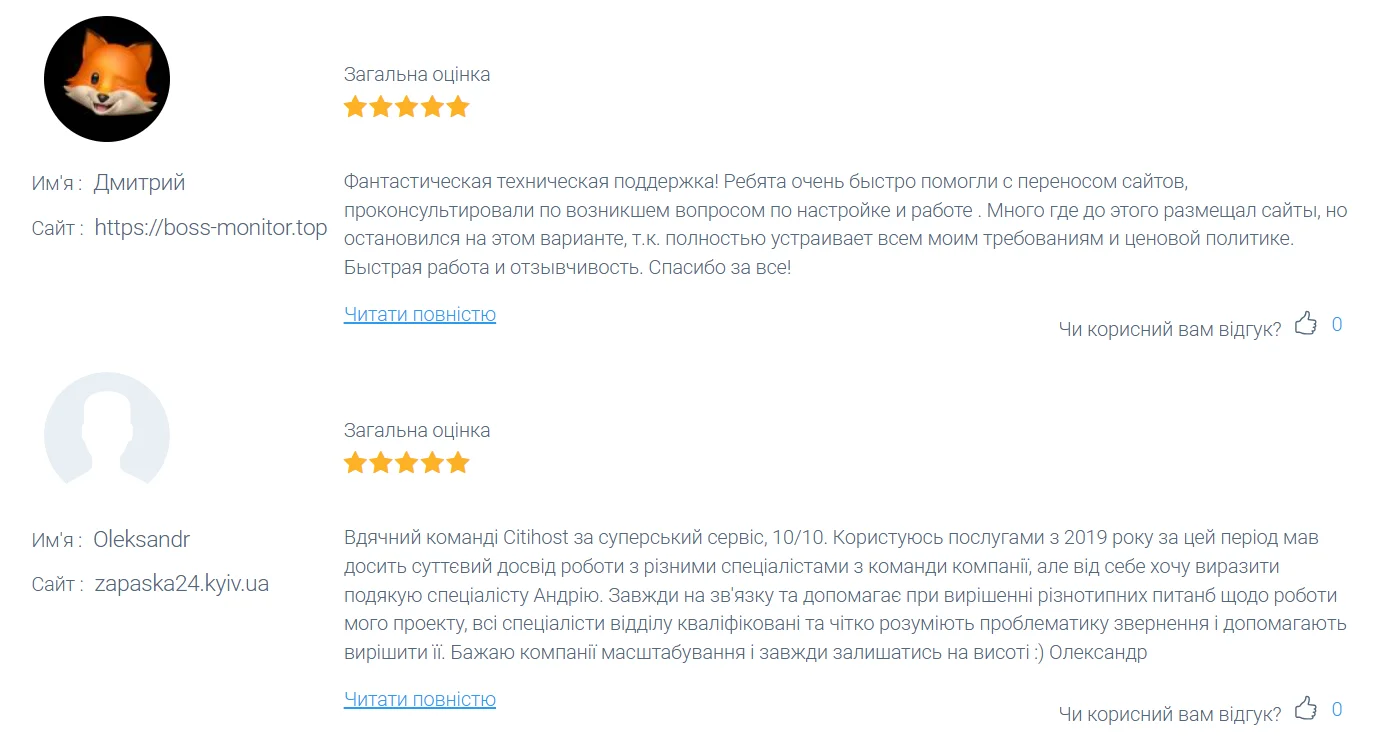
Encouraging customers to leave reviews can be done through promotions and discounts. For example, Rozetka offers a discount on a future purchase after a user shares their opinion about a previously purchased product. Additionally, pay attention to how the review submission form is placed—instead of placing it at the bottom of the page like Amazon does, Rozetka includes it in a tab next to the product description, which increases the likelihood of receiving feedback.
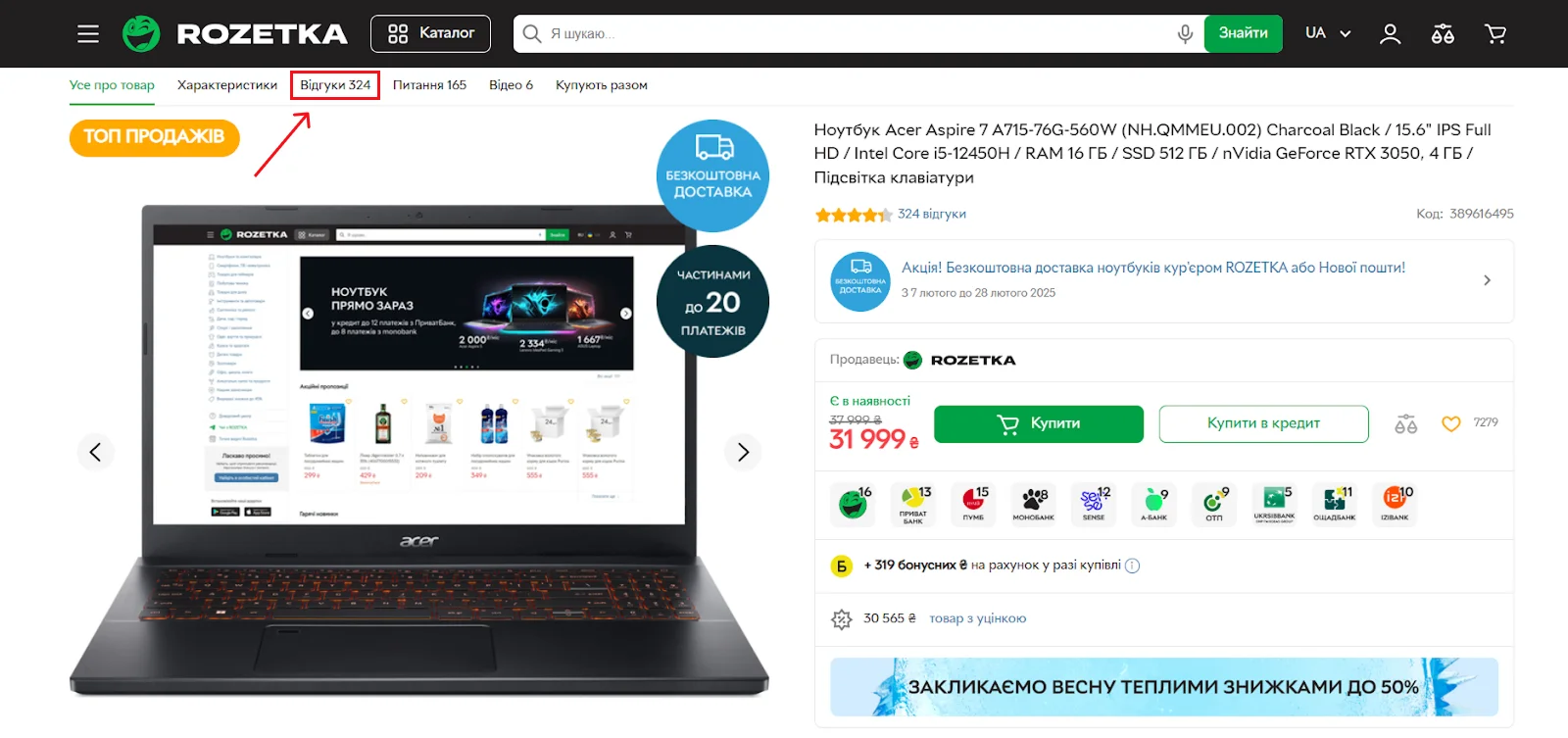
Read also: How to Attract More Comments to Your Blog
Client Photos and Videos
It’s worth adding an option to attach media files to the review form, but customers rarely spend time writing reviews, and even fewer want to upload photos. This is where user-generated content on social media comes in. For example, Apple has its own hashtag #ShotoniPhone, which users include when posting photos taken with an iPhone.
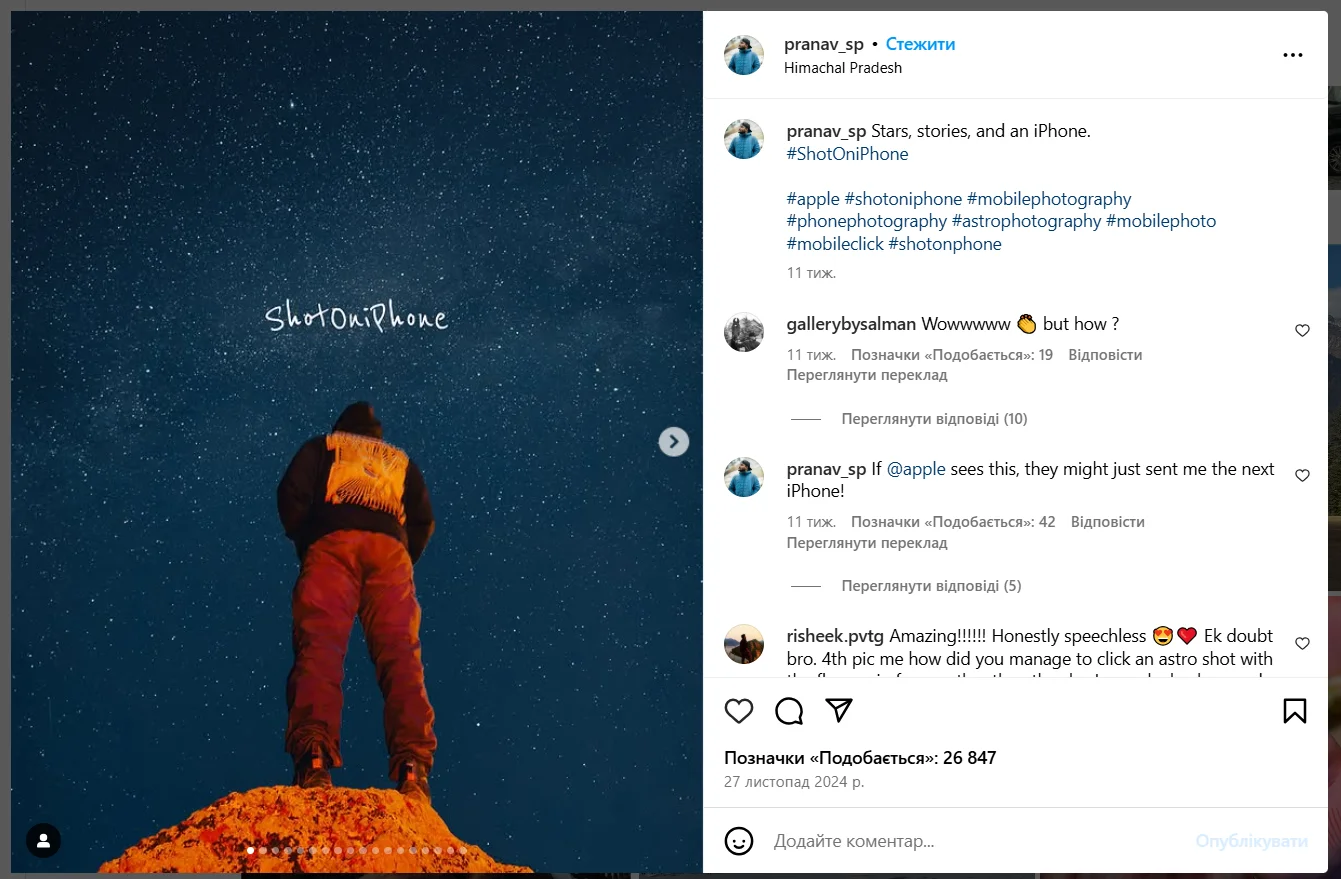
The Ukrainian bookstore Yakaboo also has its hashtag #yakaфото. Users post photos or videos of books purchased from yakaboo.ua and tag the online store. In the first week of each month, Yakaboo features a post with the seven best photos, opens a voting process, and the winner receives a book as a prize.

Success Stories
Case studies and success stories are great for financial institutions, hosting providers, web studios, analytics platforms, and similar businesses. Your goal is to give users a platform to share their stories about how your product helped them achieve a goal. This provides you with a ready-made article that attracts organic traffic and boosts trust in your brand. The key requirement is that the content must be created voluntarily by the user.
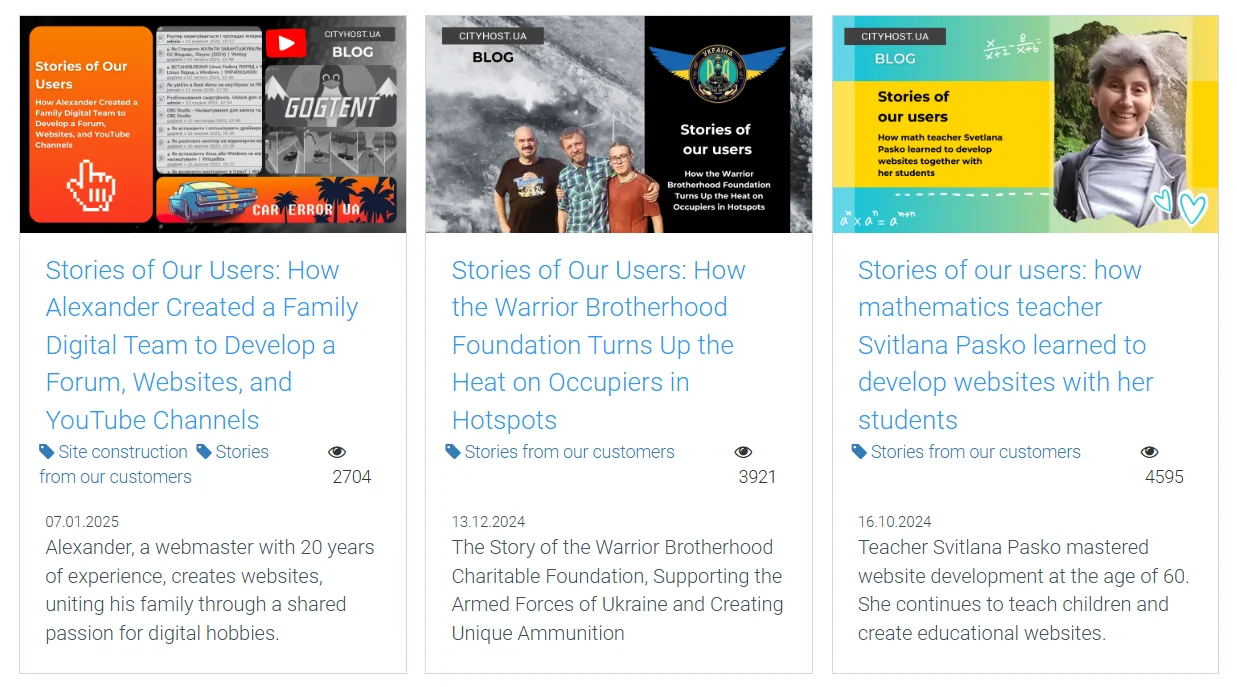
We even have a dedicated blog section featuring success stories from our users.
Reviews and Ratings
Curated ratings and reviews are powerful forms of UGC created by regular users, bloggers, or independent experts. These can be in text format (on websites and forums) or video format (on YouTube and TikTok). Many website owners and YouTubers are interested in this type of content because videos or articles like “Top 5 Hosting Providers in Ukraine” or “Best CRM Systems for Business” bring them extra traffic.
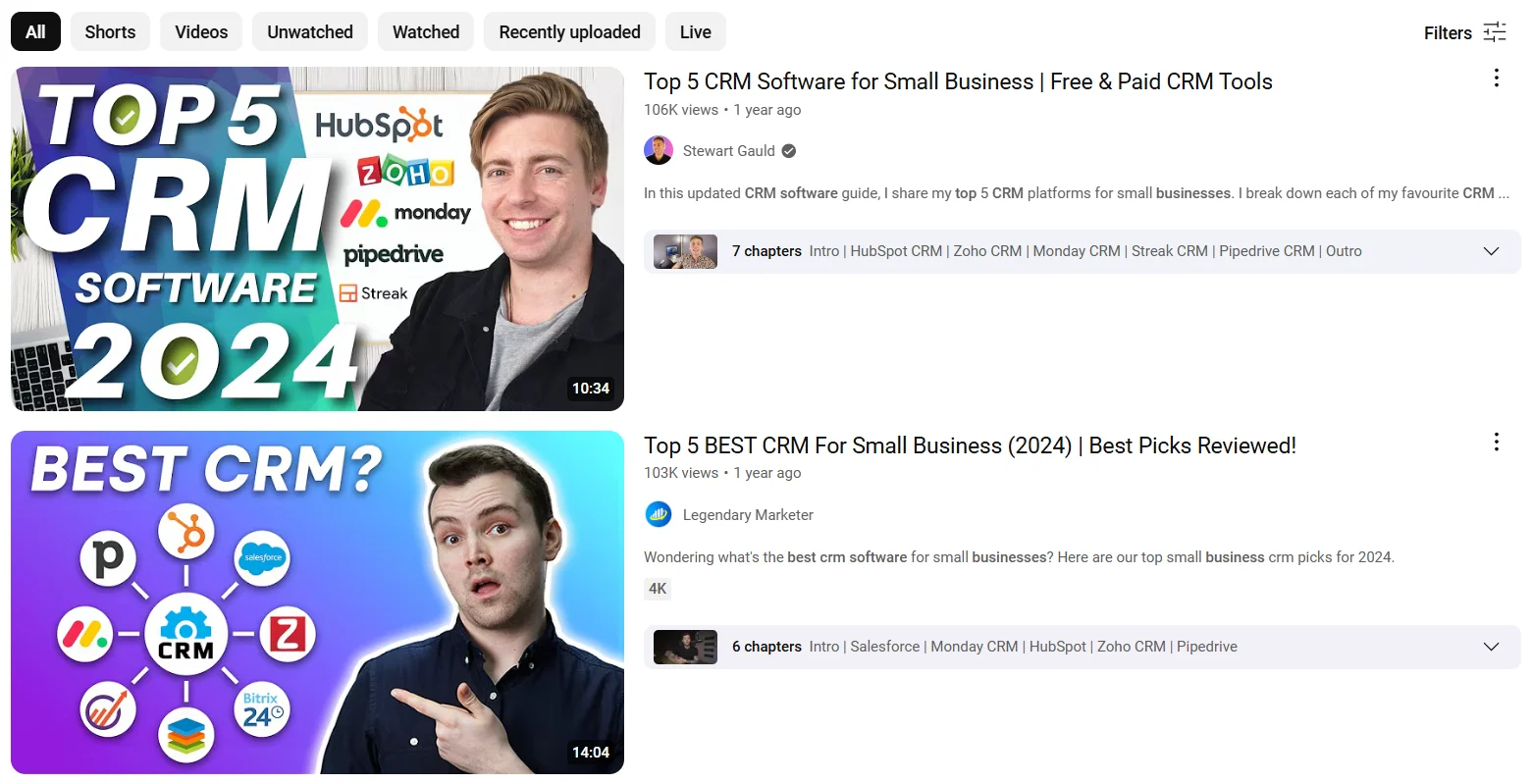
If your product is relatively well-known in its niche, people will naturally create this kind of user-generated content. However, if your product or company is less recognized, you may need to encourage customers to share their experiences or invite bloggers—though they should provide genuine and voluntary feedback.
UGC is an essential part of modern marketing. It helps build trust in your brand, bypasses “banner blindness,” and attracts new customers. Unlike traditional advertising, user-generated content is harder to control. However, by continuously improving your products, encouraging customers to create UGC, and responding promptly and professionally to user posts, you can achieve great results with minimal investment.








